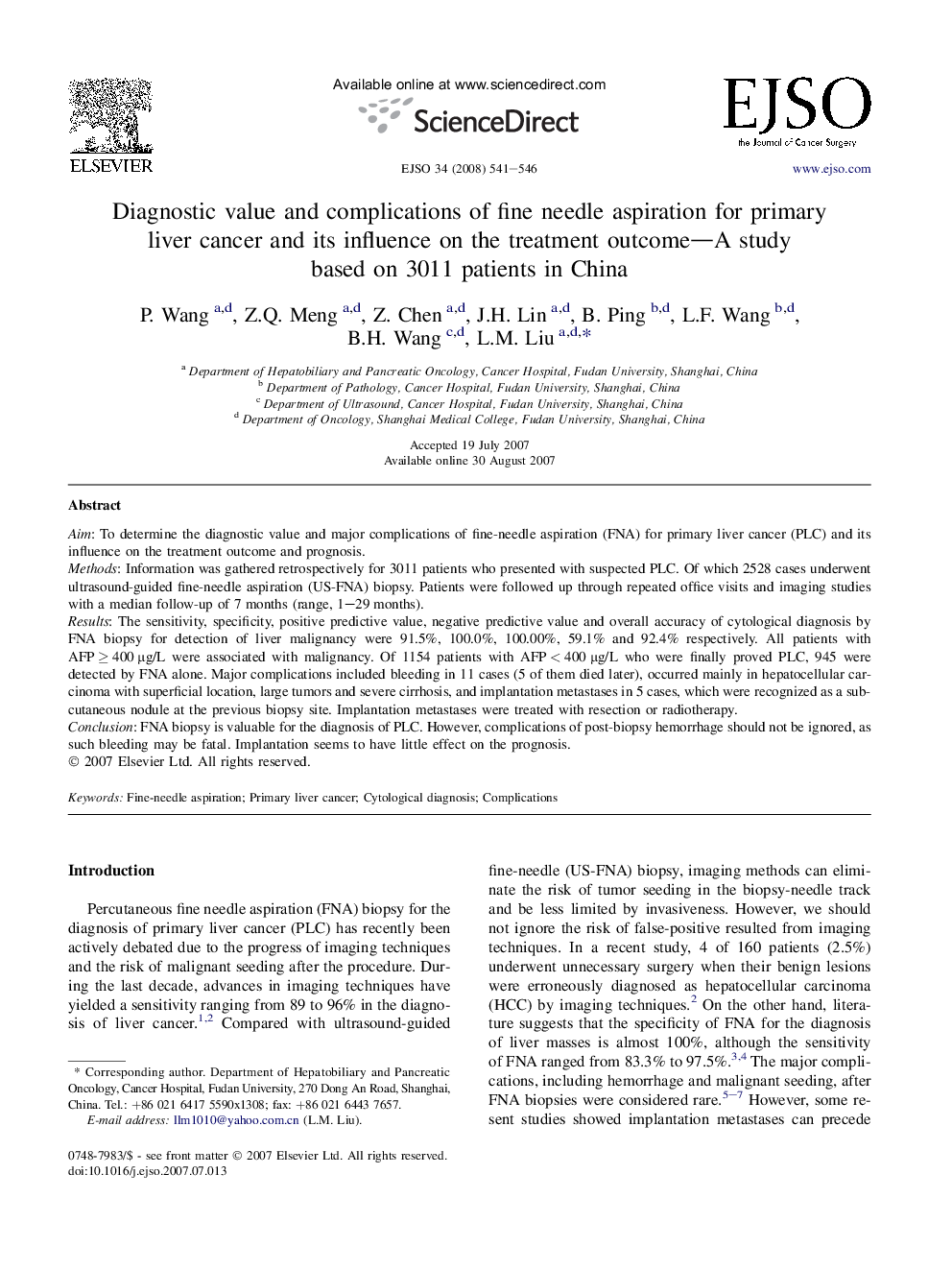| Article ID | Journal | Published Year | Pages | File Type |
|---|---|---|---|---|
| 3988279 | European Journal of Surgical Oncology (EJSO) | 2008 | 6 Pages |
AimTo determine the diagnostic value and major complications of fine-needle aspiration (FNA) for primary liver cancer (PLC) and its influence on the treatment outcome and prognosis.MethodsInformation was gathered retrospectively for 3011 patients who presented with suspected PLC. Of which 2528 cases underwent ultrasound-guided fine-needle aspiration (US-FNA) biopsy. Patients were followed up through repeated office visits and imaging studies with a median follow-up of 7 months (range, 1–29 months).ResultsThe sensitivity, specificity, positive predictive value, negative predictive value and overall accuracy of cytological diagnosis by FNA biopsy for detection of liver malignancy were 91.5%, 100.0%, 100.00%, 59.1% and 92.4% respectively. All patients with AFP ≥ 400 μg/L were associated with malignancy. Of 1154 patients with AFP < 400 μg/L who were finally proved PLC, 945 were detected by FNA alone. Major complications included bleeding in 11 cases (5 of them died later), occurred mainly in hepatocellular carcinoma with superficial location, large tumors and severe cirrhosis, and implantation metastases in 5 cases, which were recognized as a subcutaneous nodule at the previous biopsy site. Implantation metastases were treated with resection or radiotherapy.ConclusionFNA biopsy is valuable for the diagnosis of PLC. However, complications of post-biopsy hemorrhage should not be ignored, as such bleeding may be fatal. Implantation seems to have little effect on the prognosis.
